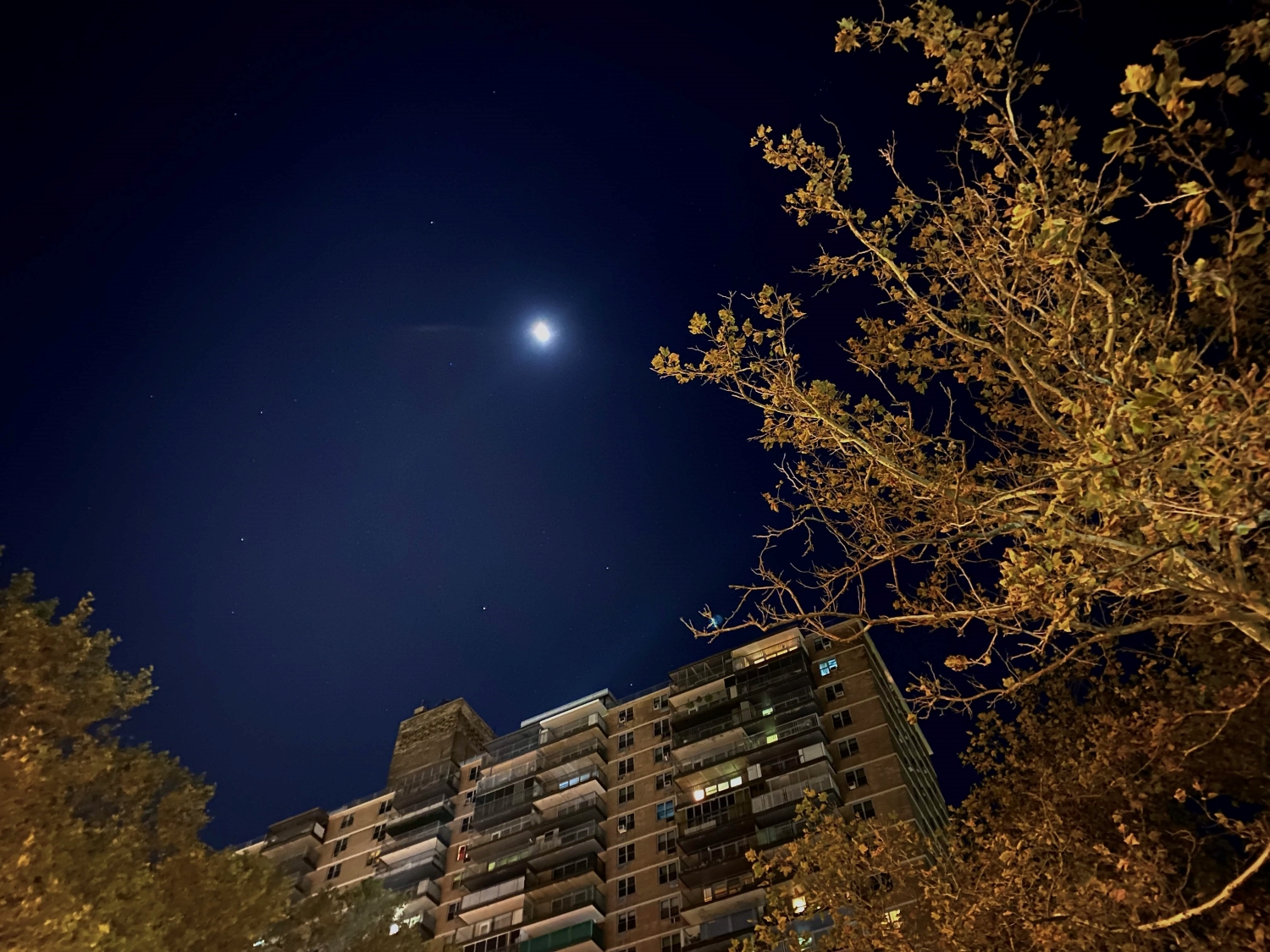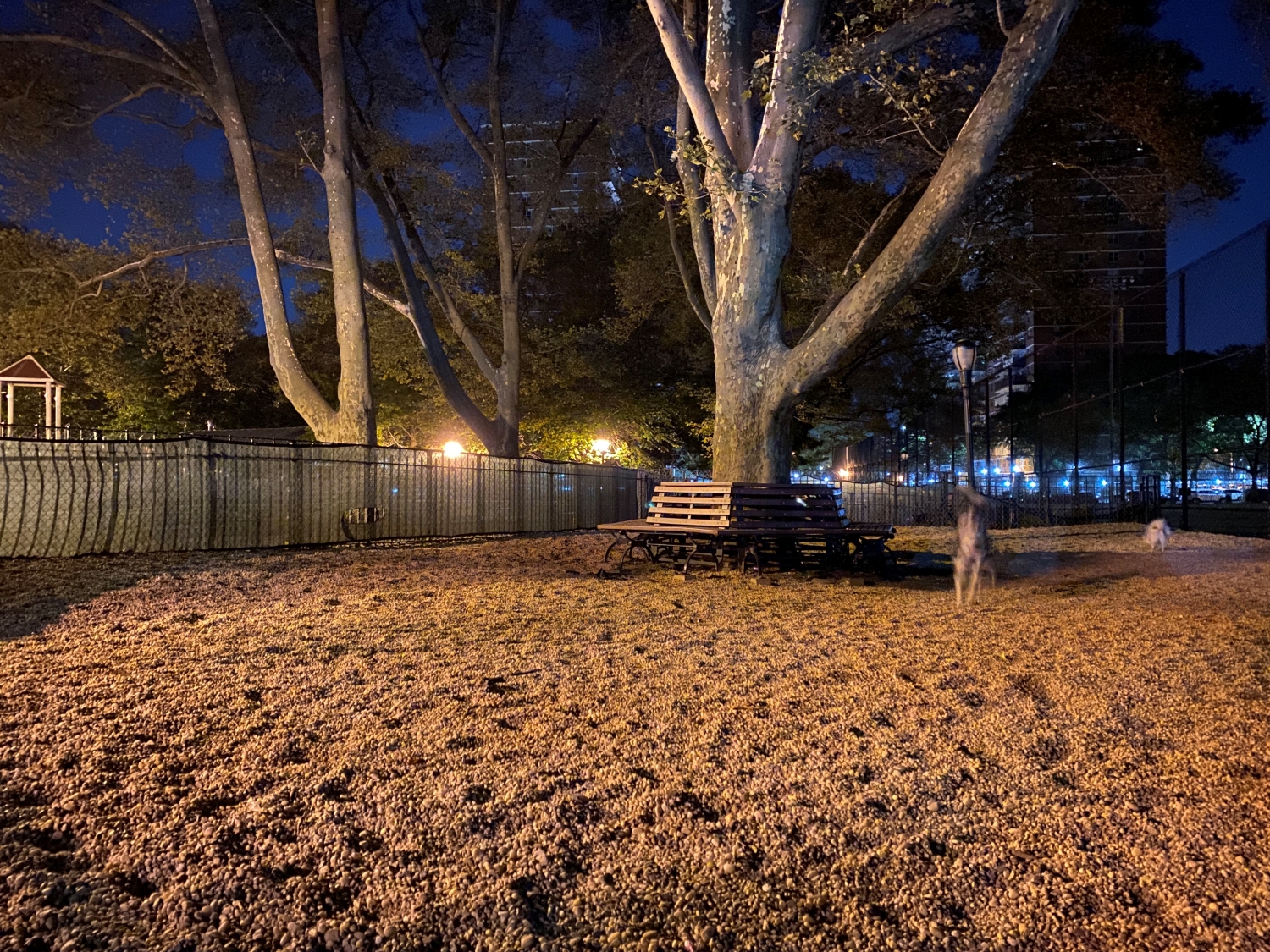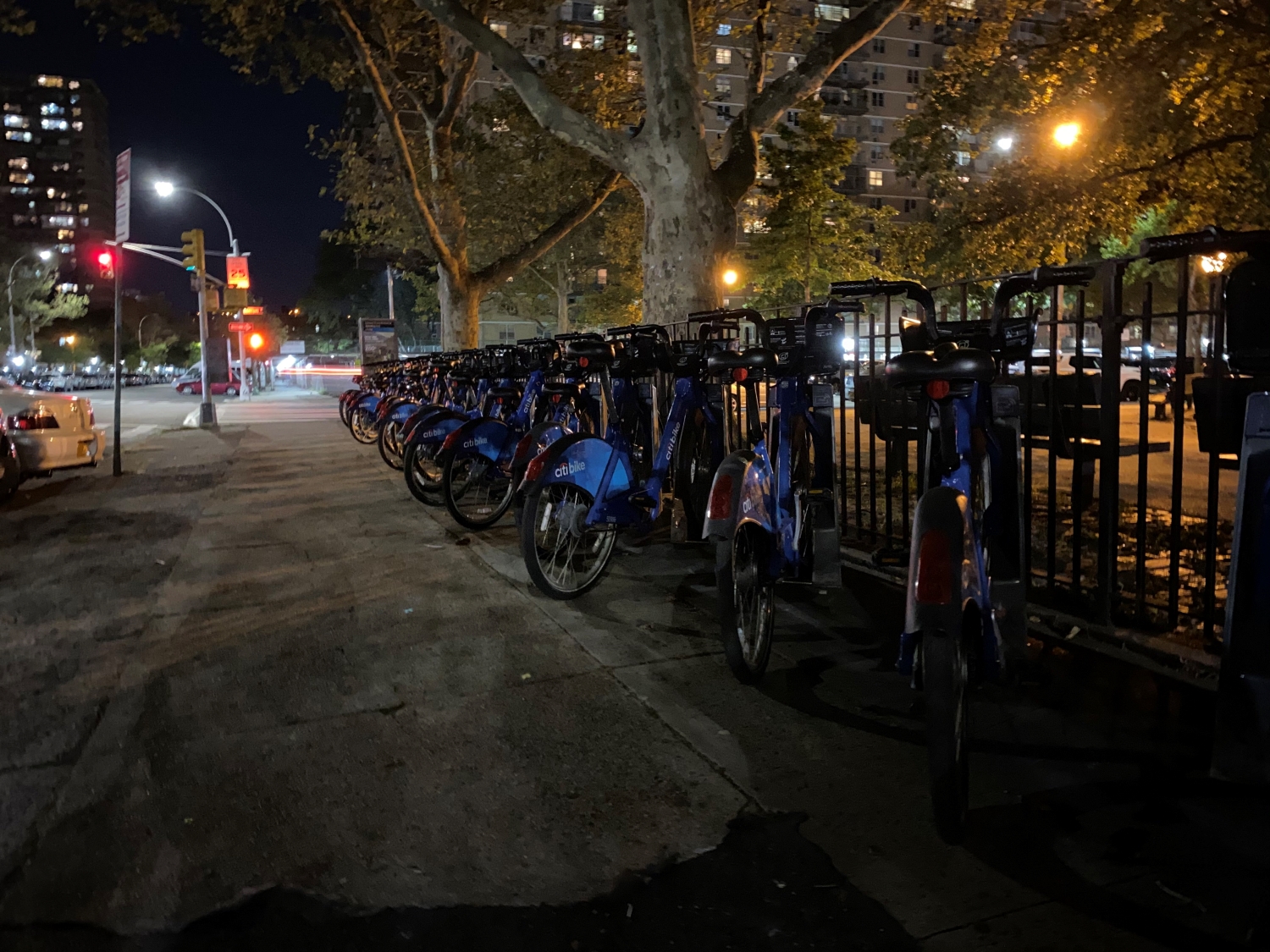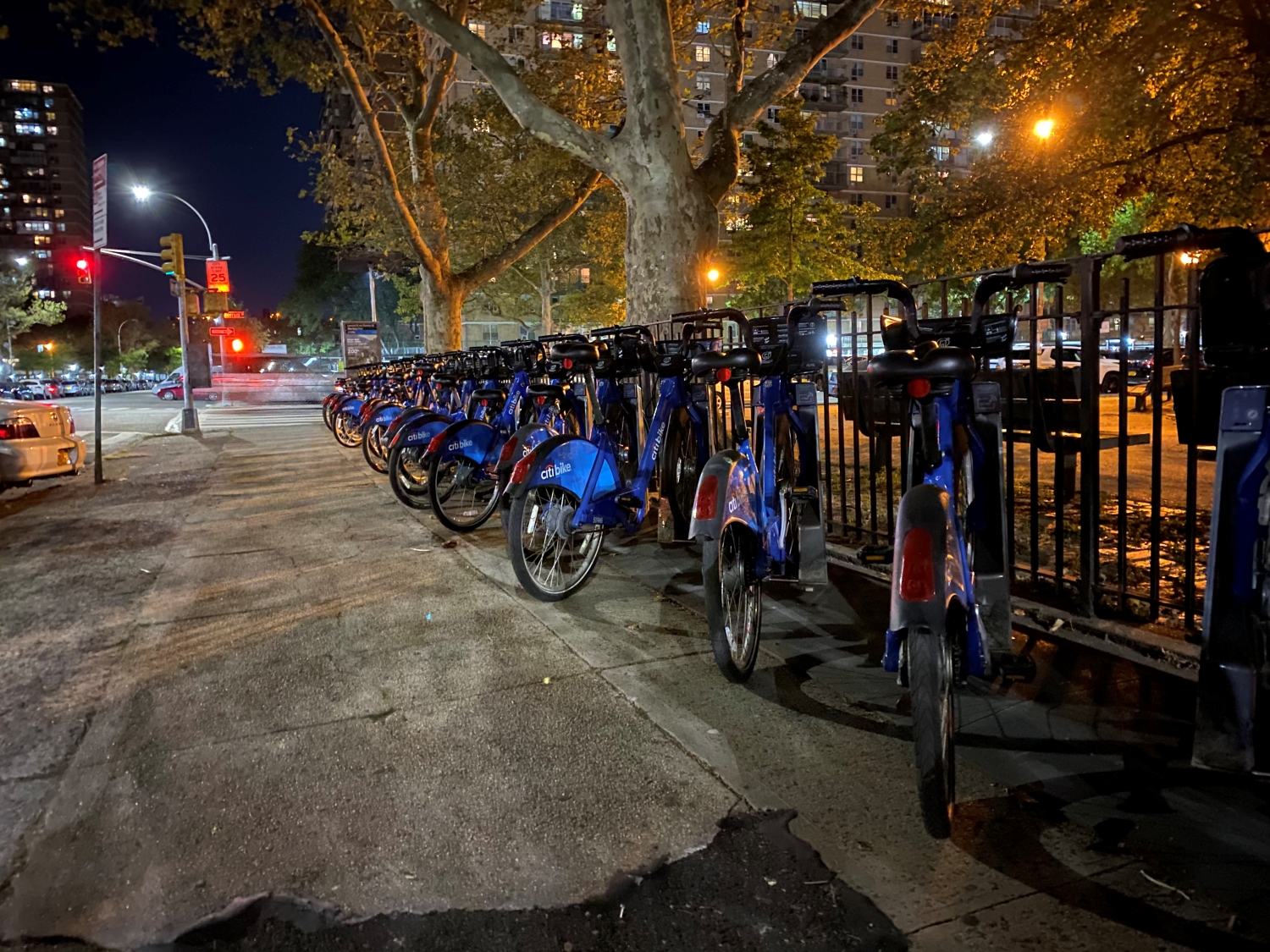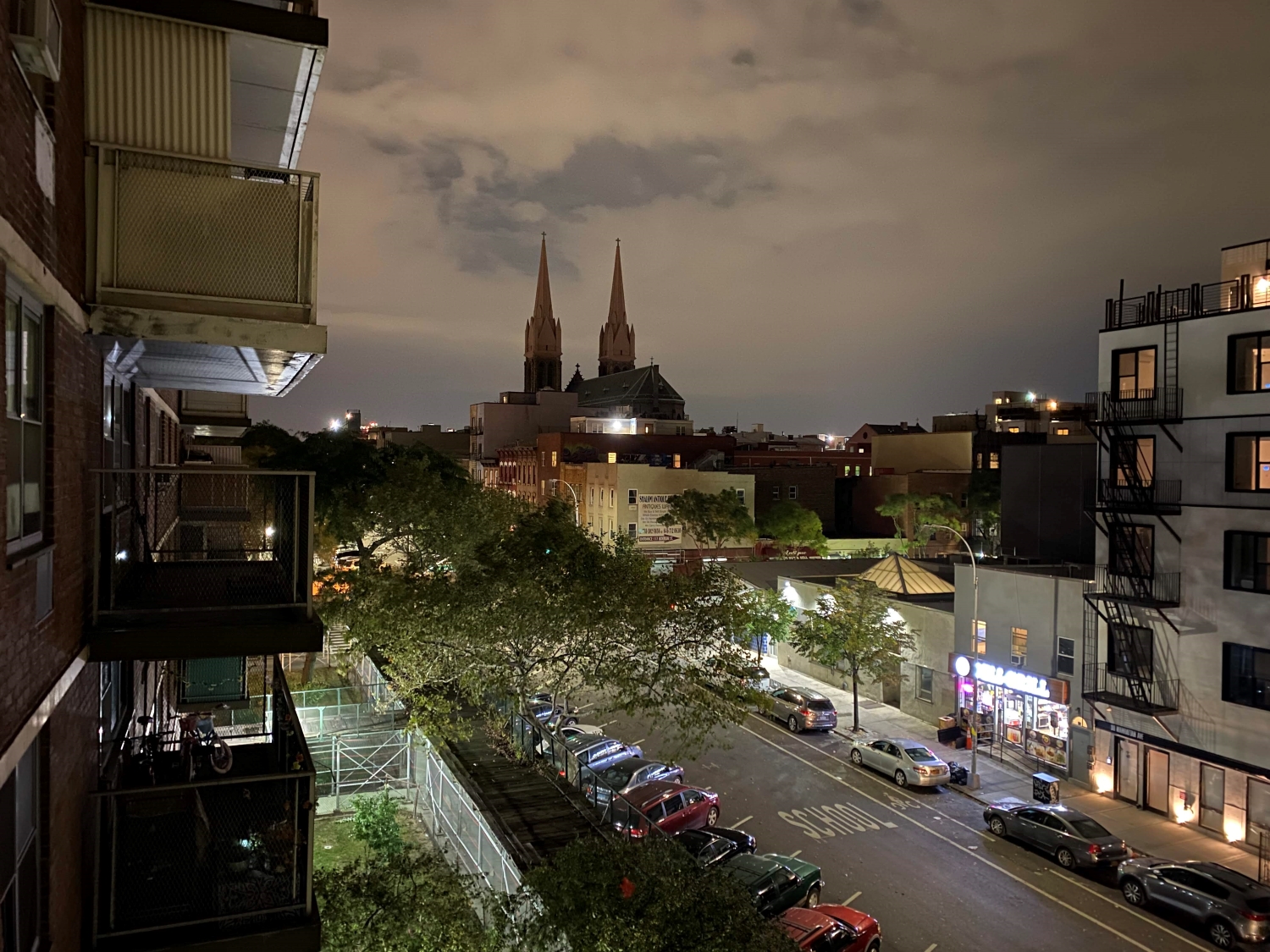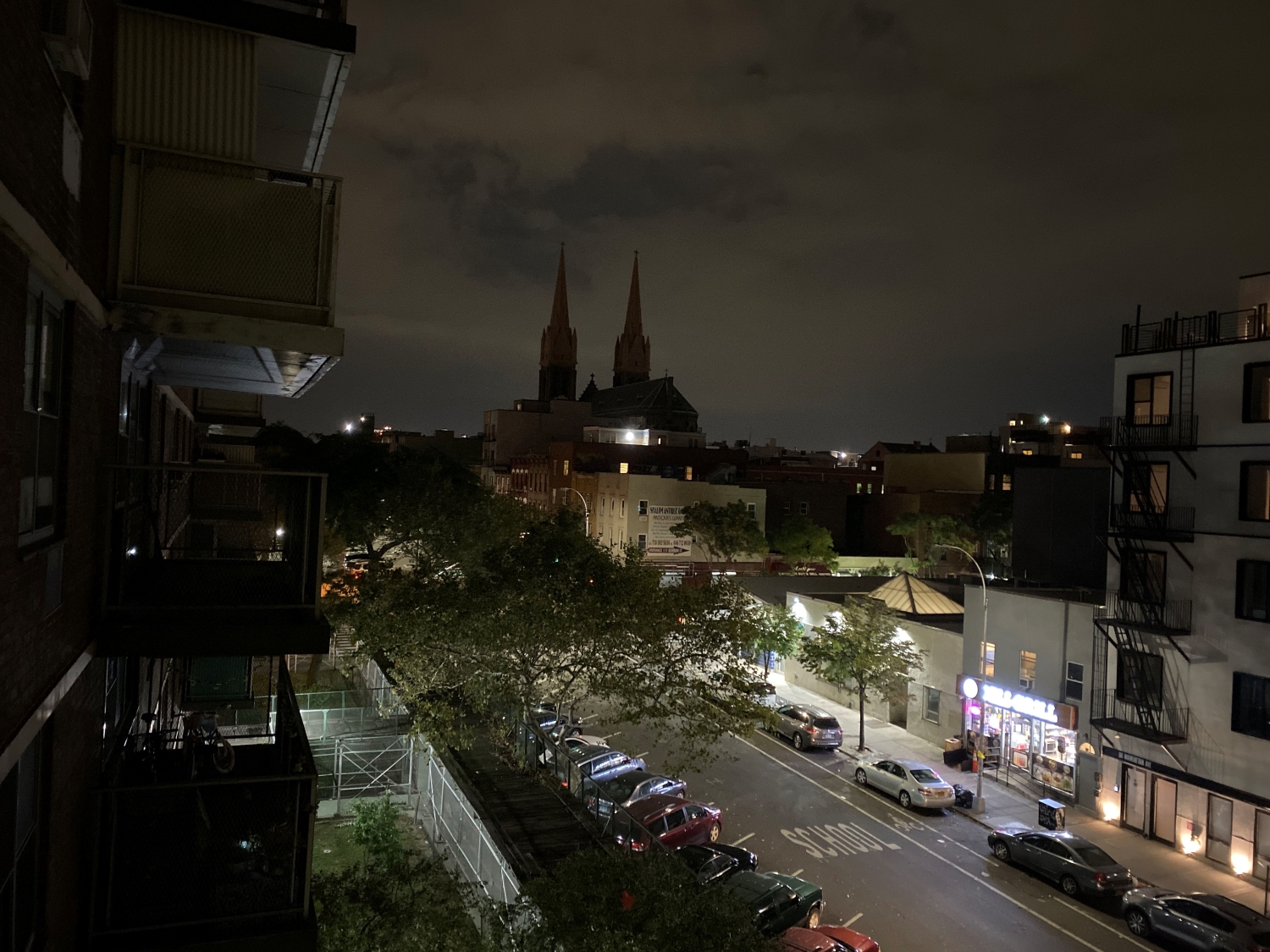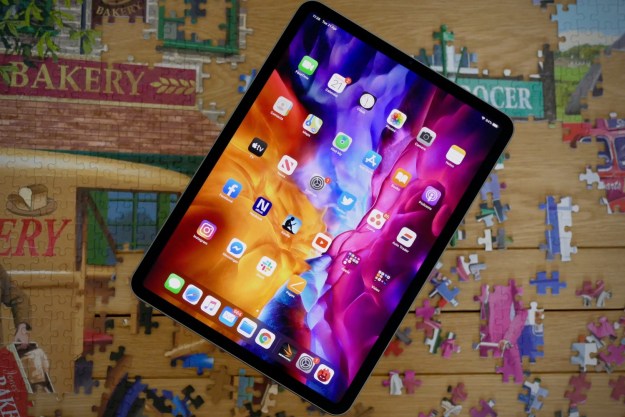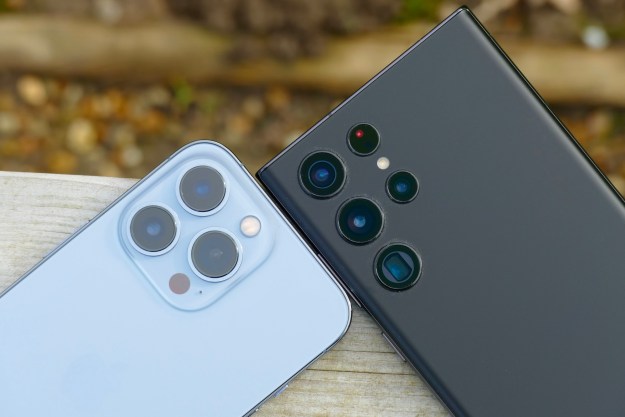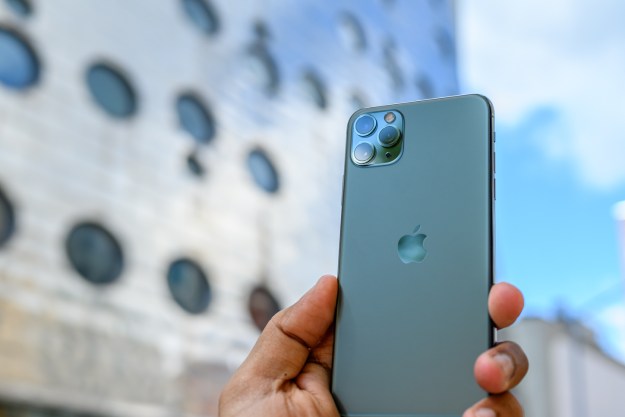
“Easily full-day battery life? Check. Class-leading cameras? Check. This is the iPhone to splurge on.”
- Class-leading cameras
- Stellar battery life with fast charging
- Bright display
- Slick iOS 13 software with consistent updates
- High-quality build
- Camera design is a miss
- No USB-C
Want the best price on the iPhone 11 Pro Max? Check out our favorite Black Monday iPhone 11 Pro Max deals.
There’s nearly nothing wrong with the iPhone 11 Pro Max. The screen is excellent, games run lag-free, and the triple-camera system is versatile and effective, but what I’ve been most impressed by is its battery life. I’ve had to force myself to use the phone even more than normal to hit 30 percent before midnight.
This isn’t just the best iPhone ever — it’s the best smartphone you can buy. Period.
Matte magic
The iPhone 11 Pro Max is slightly taller and wider than its predecessor, but what you’ll notice the most is how it is 18 grams heavier. I quickly got used to it, but the added weight does make this already-expensive phone feel even more luxurious. This is still a large phone, given its 6.5-inch screen size, and it does require two hands to reach the top of the screen.
It remains one of the few phones made of stainless steel, and it feels just as high-end as that sentence felt to write. It’s more durable than the aluminum you’ll find on most smartphones (including the iPhone 11). The back and front are wrapped in “durable” glass, but what’s new here is the matte texture on the back. It’s fantastic. It doesn’t attract ugly fingerprints, so I’m not wasting half my day wiping it clean, plus I prefer matte aesthetics over the glossy kind. Apple’s not the first company to explore this type of texture; Google did it last year with the Pixel 3.
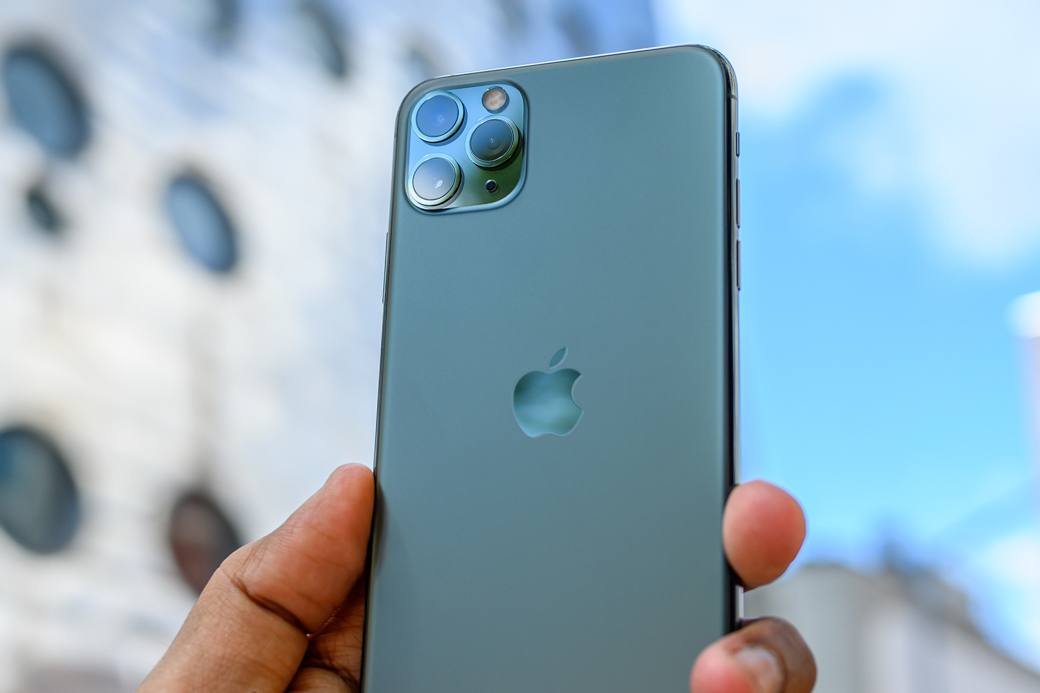
The new midnight green color is a nice change of pace from the usual gold, silver, and space grey, though I’m a sucker for the more colorful options found on the more affordable iPhone 11 (lookin’ at you, purple).
While we’re on the back of the iPhone, let’s talk about the camera design. It’s not great, though it is growing on me. The holes are so huge that they stand out a little too much, as though Apple really wants you to show everyone that you have an iPhone 11 Pro Max — not an iPhone 11 or an iPhone XS. The lenses are raised and have a metal bezel around them, but then the square camera module around them itself is also raised. The raised glass is sharp and angular; it’s not a pleasant feeling running your finger on the back and hitting the camera module.
It doesn’t attract ugly fingerprints, so I’m not wasting half my day wiping it clean.
I don’t think the camera design is ugly, but I also think Apple could have done better. One thing to note, the camera module does collect a bit of dust around the rings (as you can see in the picture above), so this area does require a bit of cleaning now and then.
The front is another area where Apple could do bettr. The 6.5-inch screen is wrapped with bezels that appear slim when looking at the iPhone individually, but put it next to phones like the Galaxy Note 10 Plus or the OnePlus 7 Pro, and you’ll see a difference. Apple hasn’t slimmed these bezels down since the iPhone X, which was two years ago, whereas Samsung has been introducing a more svelte look every year. Don’t get me wrong, the iPhone 11 Pro Max’s screen still looks modern and beautiful, but thinning out the edges a little more would have been nice.
I’m not going to complain too much about the notch, because it houses the tech necessary for Face ID, which remains the best biometric authentication technology available on a phone. It’s fast to unlock, works in any lighting conditions, and I’ll take it over an in-display fingerprint sensor any day.
Big-screen fun
The 6.5-inch size might be a bit unwieldy in the hand, but who cares about that when you have such a vast screen for watching videos and movies? I love the big OLED screen and the extra real estate it offers, especially when playing games.
Apple said it’s using a Super Retina XDR screen, which delivers impressive brightness, incredibly accurate colors, and a sharp 2,688 x 1,242 resolution. I’ve had zero trouble watching shows with a lot of dark scenes, like The Spy on Netflix, in bright sunlight — it helps that the brightness can go all the way up to 1,200 nits in HDR scenes (800 nits is typical brightness).

Putting it side-by-side with the Note 10 Plus, scenes from Netflix movies, like the new film, Between Two Ferns, are brighter and easier to see on the iPhone. The Note often tends to show cooler tones too, whereas the iPhone has warmer ones with better white balance. Both these screens are excellent, but I’m enjoying the display on the iPhone a little more.
What are the speakers like? It’s a stereo setup with one at the top of the phone (the earpiece) and a bottom-firing one. The system doesn’t get as loud as phones like the Note 10 Plus, but music sounds a little richer. When listening to Israel Kamakawiwoʻole’s Somewhere Over the Rainbow, his voice doesn’t sound as raspy as it does on the Note phone. Bass isn’t strong at all, but it’s a little more clear than Samsung’s phone. If you want the best smartphone speaker, check out the Razer Phone 2, but you’re better off buying a Bluetooth speaker.
The speakers support Dolby Atmos for a surround sound experience, which I’ve noticed more when playing games that rely on stereo sound.
Camera trio

Yes, the iPhone 11 Pro and iPhone 11 Pro Max are among the best camera phones available. It’s not just the fact that Apple has added an extra lens — yes, it adds versatility — but that the improvements largely come from image processing.
Smart HDR is, well, smarter. There’s a Night Mode for superior low-light photos, and a new feature called semantic rendering that snaps several underexposed photos before you tap the shutter button, the photo you want when you tap the button, and an overexposed shot afterward to balance out the lighting and merge them together. The camera can also understand specific parts of the photo, like a face or a flower, and apply separate Smart HDR improvements to those areas rather than a blanket change to the whole photo.
All of this is viewed through the triple-camera system, which packs 12 megapixels per sensor. The main f/1.8 sensor is the standard wide-angle. Then there’s the telephoto lens, which now has a wider f/2.0 aperture for better low-light photography, and the new ultra-wide-angle lens, which has an f/2.4 aperture and a 120-degree field of view so you can take in more of a scene.
The new ultra-wide-angle lens isn’t entirely unique, but it’s still somewhat special among flagship phones. Google’s Pixel 4, the popular Android alternative won’t have a wide-angle lens.
Photos snapped during the day deliver largely natural colors, sometimes with a bit of a warm tone. Details are impeccably strong, and switching between each of these lenses feels seamless and smooth.
The telephoto lens now offers up more detail in lower-light conditions, but I wish the same could be said for the new ultra-wide-angle lens. It takes fantastic daytime shots, but it doesn’t perform that well at night, as you can see in the below comparison with the Samsung Galaxy Note 10 Plus.


I also wish Apple allowed autofocus on it. It’s fixed focus, which means you need to be 1 meter away from a subject for it to be in focus, so you can’t get super-close for some unique perspectives.
Finally, a Night Mode
Huawei and Google have pushed the needle with low-light photography after they introduced respective Night Modes on their smartphones, and Apple is playing catchup by finally adding it on the iPhone — except that the quality is a step above its competitors.
Night Mode triggers automatically when the camera deems there’s not enough light. You can either leave it in the default state, which usually snaps a 3- to 2-second-long exposure (that means you’ll need to keep as still as you can to avoid a blurry photo) or choose “Max” to force it to snap as many pictures as it can, but this also is up to the camera based on how much it thinks is necessary. Ten seconds seems to be the average in dark situations, but I’ve seen it go even longer. If you put it on a tripod, the camera can understand that it’s stable and can snap even more photos.
There’s an option to turn it off, but why would you want to? If you’re trying to snap an image of a subject that’s moving a little, turning Night Mode off will allow you to capture the image faster and in focus, whereas a long exposure would just make the photo extra blurry. For the most part, it’s good to leave it on, as the camera’s decision is usually the correct one.
The gallery above has a collection of Night Mode photos and some photos of Night Mode turned off as a comparison. On the whole — permitted you don’t move your hands too much — Night Mode elevates the iPhone’s low-light photography game to the point where it can compete with, if not surpass, phones like the Google Pixel 3. The downside is that Night Mode does not work on the telephoto or wide-angle lens, so your versatility dips a bit in poor lighting conditions.



You can see how the iPhone 11 Pro Max’s Night Mode maintained the colors in the above photo, while still ensuring strong details and good contrast, beating out the shots from the Pixel 3 and the Note 10 Plus, which were captured with their respective Night Modes.
The best part is how the iPhone largely maintains the ambiance of the scene with its Night Mode, whereas Night Modes from Google or Samsung can sometimes brighten up the image too much and ruin the overall look. It’s a different style, but one that I’m in favor of.
Portrait mode and selfies
My favorite change in Portrait mode is that you can now capture a photo not just with the telephoto lens, but also the main f/1.8 lens as well. Here’s what the difference can look like:


It means you can actually get great-looking portraits at night; the portrait photo from the normal lens has a ton more detail than the grainy and blurry one from the telephoto. That wasn’t possible on last year’s iPhone XS Max. If you’re interested in comparisons with last year’s iPhone XS Max, check out our camera shootout.
Portrait mode still isn’t perfect, but it produces some of the most DSLR-like images among its competition. The Pixel 3 still gives it a run for its money, though.
The selfie camera has been upgraded to 12 megapixels from 7 megapixels last year, but selfies in portrait orientation shoot at a 7-megapixel crop by default. You can tap on the icon above the shutter to get a wider 12-megapixel view, allowing for more of the background to be in your image.
These selfies are more detailed and offer up natural colors, and portrait mode selfies do a decent job of correctly outlining the subject and applying the blur effect to the background.
- 1. iPhone 11 Pro, selfie
- 2. Pixel 3 XL, selfie
- 3. iPhone 11 Pro Max, portrait selfie
- 4. Pixel 3 XL, portrait selfie
The iPhone brightens up the colors a bit, though I still like the darker tones of the Pixel photo. Where the Pixel falters though, is with the portrait mode, where it messes up the blur outline around the girl’s hair. The iPhone doesn’t nail it perfectly, but it’s much better than the Pixel 3’s attempt.
Video improvements
There are video upgrades, too! The camera can shoot in 4K at 60 frames per second, and it does a good job with stabilization, as you can see in the video above. It delivers smoother shots than the Galaxy Note 10 or the Pixel 3. That’s without mentioning the fun new addition called Slofies, or slow-motion selfies, which I’m thoroughly enjoying.
It brings Apple back into dominance in a highly competitive field.
The camera system on the iPhone 11 Pro Max is powerful and it brings Apple back into dominance in a highly competitive field, but it’s only slightly ahead. Google’s Pixel 4 is around the corner, and it has a strong chance of taking back the crown.
Unlimited power, slick iOS 13
Never once did I feel like the iPhone 11 Pro Max was too slow for a task or game. That’s thanks to Apple’s A13 Bionic processor which purportedly delivers 20% faster CPU and GPU performance over last year’s iPhone XS Max. Launching apps is a snappy affair, as is switching between them, and I played several games on Apple Arcade — ranging from Where Cards Fall to Oceanhorn 2: Knights of the Lost Realm — for an hour, if not longer, and ran into no problems with performance.

Here are a few benchmark results:
- AnTuTu 3DBench: 443,735
- Geekbench 5 CPU: 1,331 single-core; 3,444 multi-core
These are among the highest scores I’ve ever seen on a smartphone, with the only phone performing better being the iPhone 11 Pro. The Note 10 Plus is almost a full 100,000 lower than the iPhone 11 Pro Max’s AnTuTu score. In real-world use, Samsung’s Note 10 Plus is a powerful and fast phone, but that’s an impressive gap all the same. You won’t have problems running…well, just about anything on the iPhone 11 Pro Max.
It’s not perfect, though. Apple should bump the base storage to 128GB instead of 64GB. It’s worse when you think about how there’s no MicroSD card slot, and how Apple still offers just 5GB of free iCloud storage.
Updates come instantly when Apple issues them.
The phone runs iOS 13, Apple’s latest software version, and it’s excellent. Dark mode makes it look beautiful, especially on the OLED screen, Face ID is faster, swipe typing is finally available natively, and stronger privacy features offer more peace of mind. Check out my in-depth iOS 13 impressions for more.
The best part of owning an iPhone is how you get updates instantly when Apple issues them, and how these updates can keep coming four to five years after a phone came out. The only other phones that come close to that level of software update support are Google’s Pixel phones, but even those won’t be updated for as long as an iPhone.
Stellar battery life
Incredible is the word I’d use to describe battery life on the iPhone 11 Pro Max. I’ve yet to see it dip under 30 percent. I’ve used it since 8 a.m. on multiple days and the phone sat at 35 percent at 5 a.m. the next day, leaving me with plenty of juice to keep using it until I got to the office if I didn’t want to charge the phone overnight.
How much you get out of it will depend on your usage. I played games, watched episodes of shows on Netflix, responded to messages and emails, streamed music, snapped pictures — medium use, I’d say — and I frequently arrived home around 6 p.m. with a little under 50 percent remaining in the tank. If I stayed out at night and hit the town, I’d be at around 30 percent at 11 p.m.
Battery life is a full day of comfortable, worry-free use, and easily a day-and-a-half, if not two, if you’re a light user.
Battery life is a full day of comfortable, worry-free use.
In our standard video playback battery test, where we play a 1080p YouTube video with the brightness set to the max over Wi-Fi, the iPhone 11 Pro Max lasted 10 hours and 39 minutes. It’s a respectable score, but phones like the iPhone 11 Pro and the Galaxy Note 10 Plus lasted more than 12 hours. Still, it’s not the best indicator for real-world performance, as I found battery life on the Max to be significantly better than on the Note 10 Plus.
Charging speed has improved because Apple is finally packing an 18W fast charger in the box. It won’t blow the competition away like the Galaxy Note 10 Plus, but it’s significantly better than the three-and-a-half-hour charge time on last year’s iPhone with the included cable. It took a little less than an hour and a half to recharge the iPhone 11 Pro Max from 0 to 100 percent. Wireless charging is available if you want to top up the phone throughout the day with a wireless charging pad at work.
What I would have liked to see is a USB-C port instead of Lightning. Apple has been adding USB-C to its other products, like MacBooks and, most recently, the iPad Pro, for some time. Considering the iPhone now has the “Pro” moniker, it would have been a ripe time to add the port as well. It would have made carrying charging cables a simple affair, as you’d just need one to charge up all your devices. Guess we’ll have to wait until the 2020 iPhone.
Price, availability, and warranty
The iPhone 11 Pro Max is $1,100, or $45.79 per month if you opt for a monthly installment plan, and that’s for the base 64GB model. You can also choose the 256GB storage option and the price jumps to $1,249. The 512GB version will set you back $1,449.
Apple offers a standard limited warranty that protects your phone against manufacturing defects for one year from the date of purchase. You can pay more for AppleCare+, which adds two years of coverage for accidental damage and defects.
Our take
For big-screen lovers, the iPhone 11 Pro Max is the way to go. It offers excellent battery life, performance, and a class-leading camera system.
Is there a better alternative?
You don’t need to spend $1,100 for a smartphone. If you want an iPhone but want to spend less, the iPhone 11 is an excellent alternative that carries many of the same features as the iPhone 11 Pro Max, like the same A13 Bionic processor and iOS 13. Battery life isn’t as long, but still good, and there’s no telephoto lens, but it’s $400 less at $700. If you want a smaller iPhone, but money is no object, go for the 5.8-inch iPhone 11 Pro, which is $1,000.
If you’re open to switching to Android, the Galaxy Note 10 Plus is the iPhone 11 Pro Max’s direct competitor, offering up an excellent screen experience, a triple-camera system, a stylus, and a svelte design. It can charge faster, but battery life isn’t as strong.
Google’s Pixel 4 XL is another strong alternative. Just released, the Pixel 4 XL has great design, a nice display, and a camera that’s nearly as good (but lacking a wide-angle lens). The downside is battery life, which doesn’t match up to the iPhone 11 Pro Max.
Check out our best smartphones guide for more.
How long will it last?
Apple’s iPhones last a long time, and this one should last you four to five years, provided you replace the battery in the third year so you can get extra life out of it. Apple provides several years of software updates to its phones — the iPhone 6S can install iOS 13, and it came out in 2015.
You may still want to slap a case on the iPhone 11 Pro Max — it is glass after all — but it does also have an IP68 dust- and water-resistance rating that protects it in 4 meters underwater up to 30 minutes.
Should you buy it?
Yes. If you want the best of the best, with a huge screen, get the iPhone 11 Pro Max.
Editors' Recommendations
- Best Apple deals: Save on AirPods, Apple Watch, iPad, MacBook
- An Apple insider just revealed how iOS 18’s AI features will work
- iPhone 16: news, rumored price, release date, and more
- 10 iPhone productivity apps you need to download right now
- Best iPhone 15 deals: How to get Apple’s latest iPhone for free








